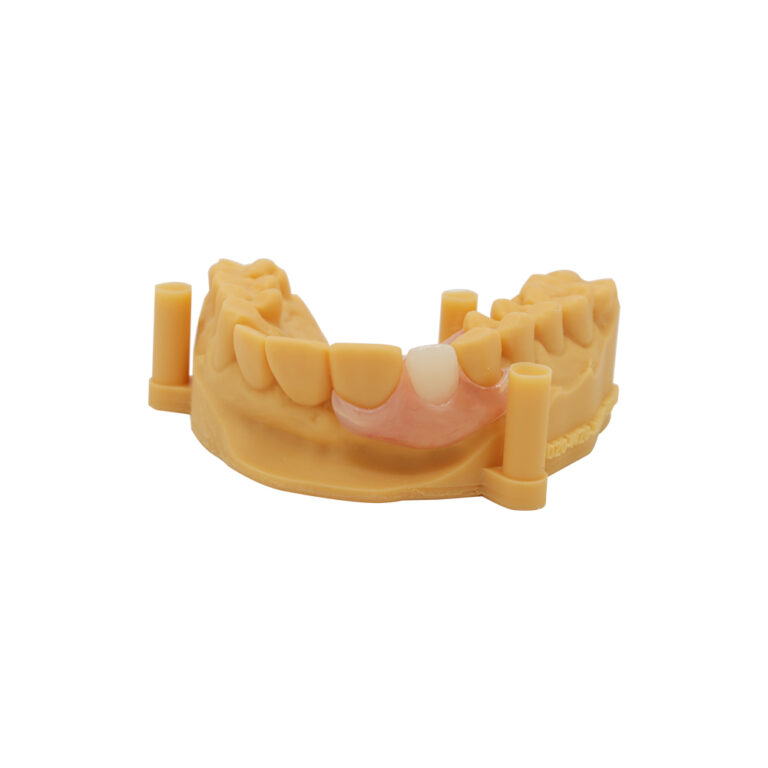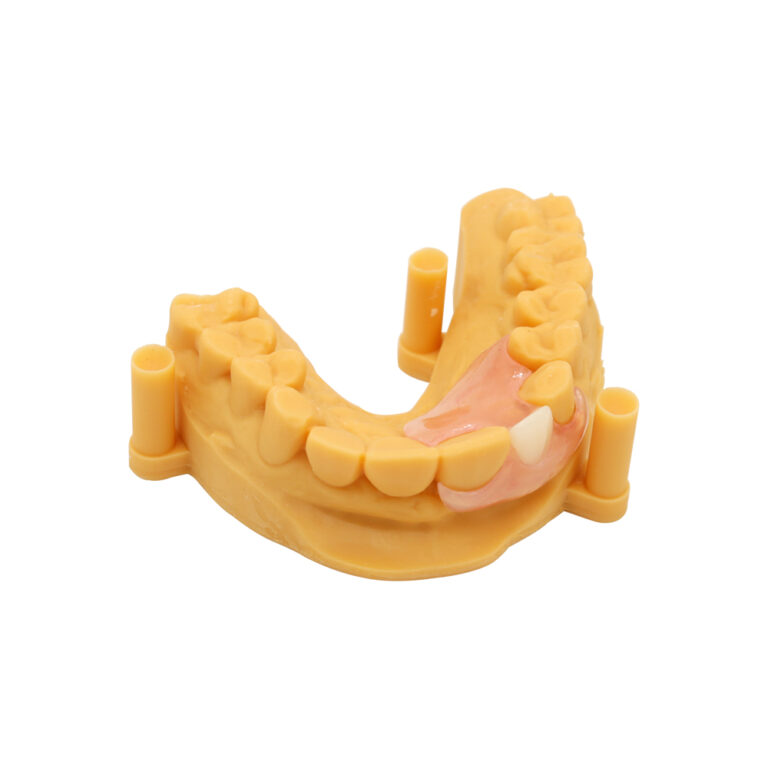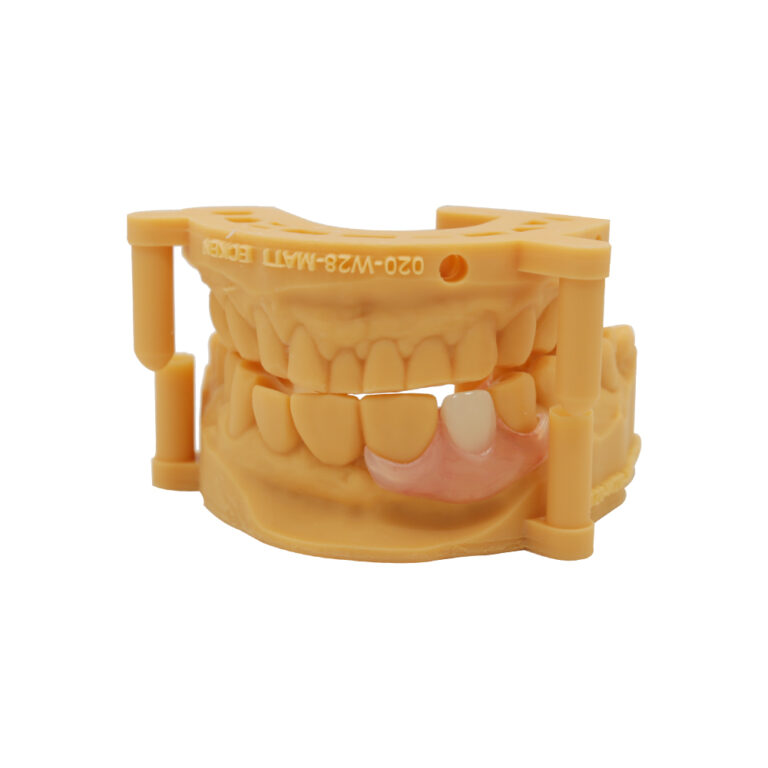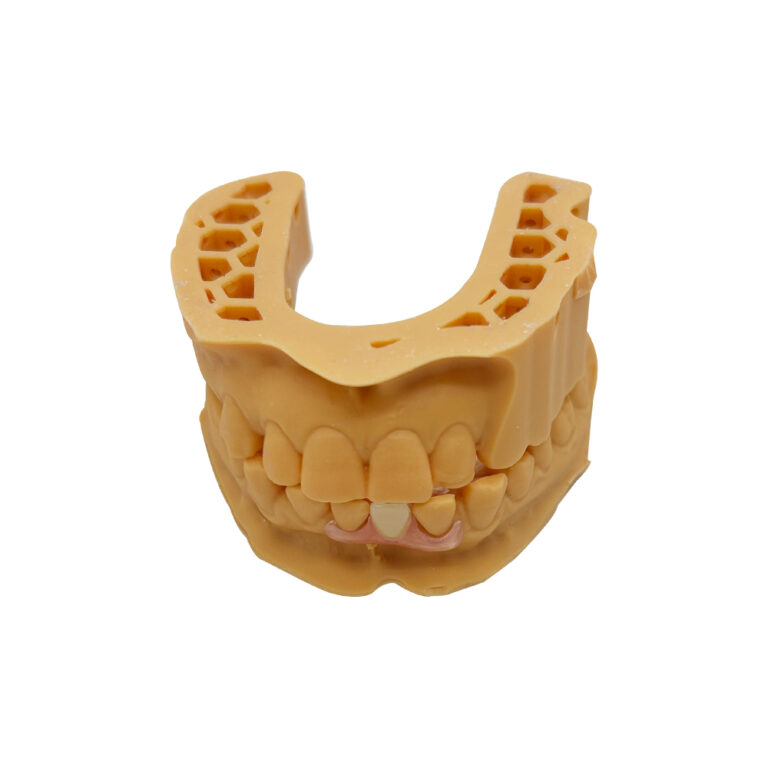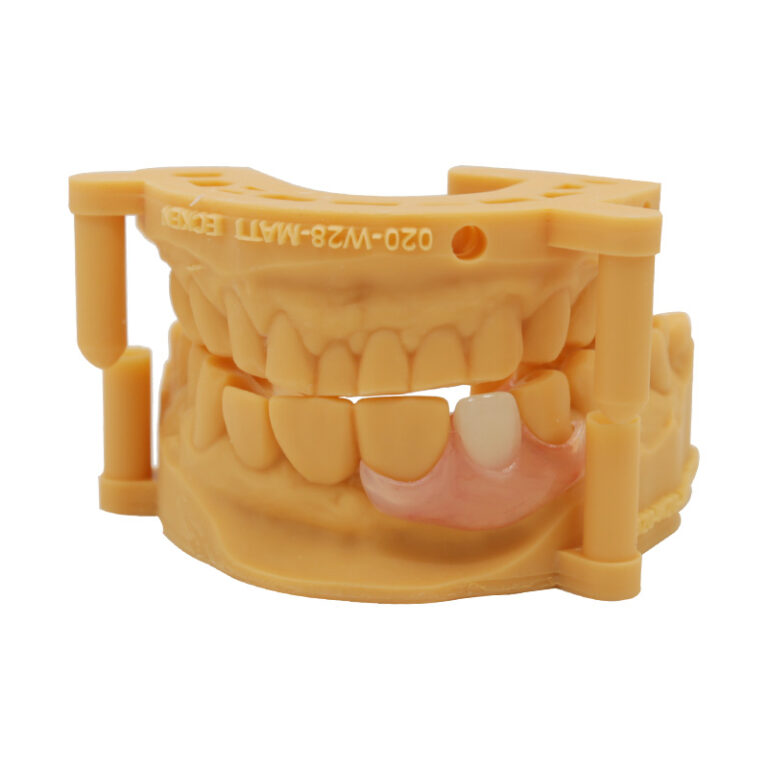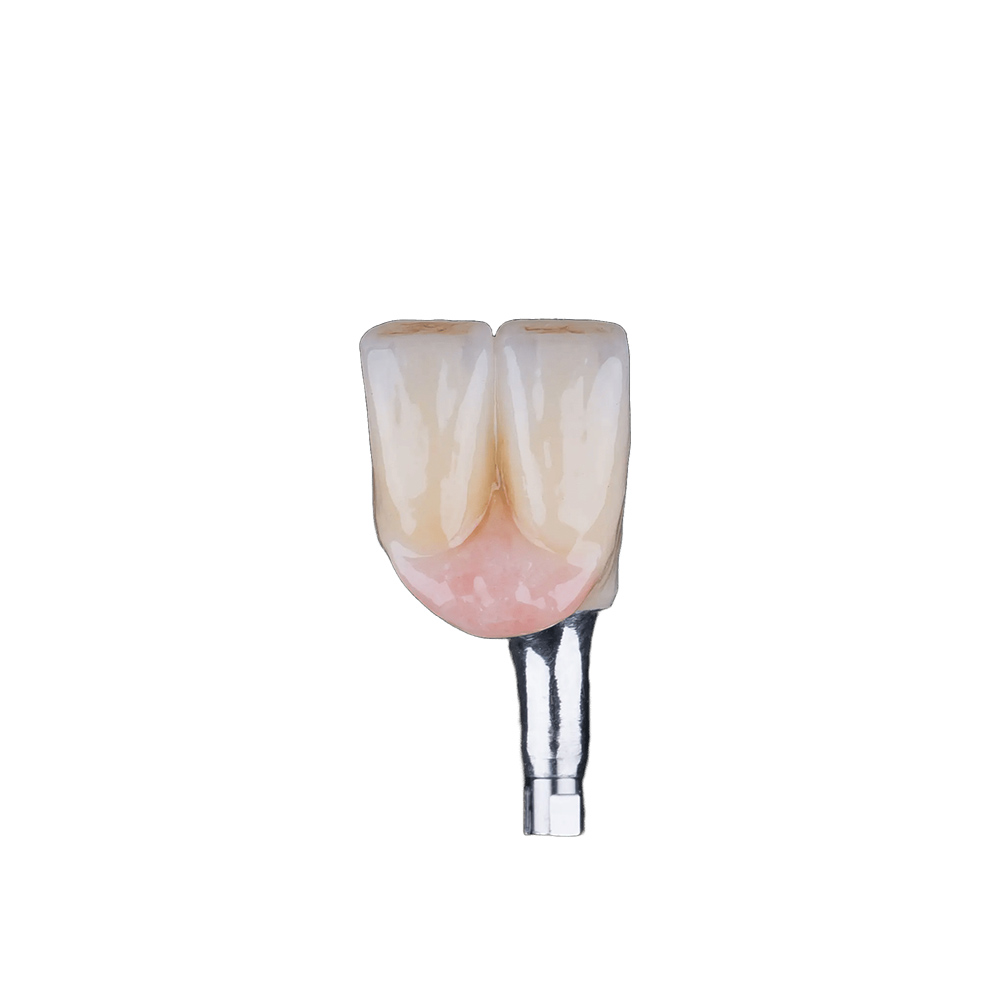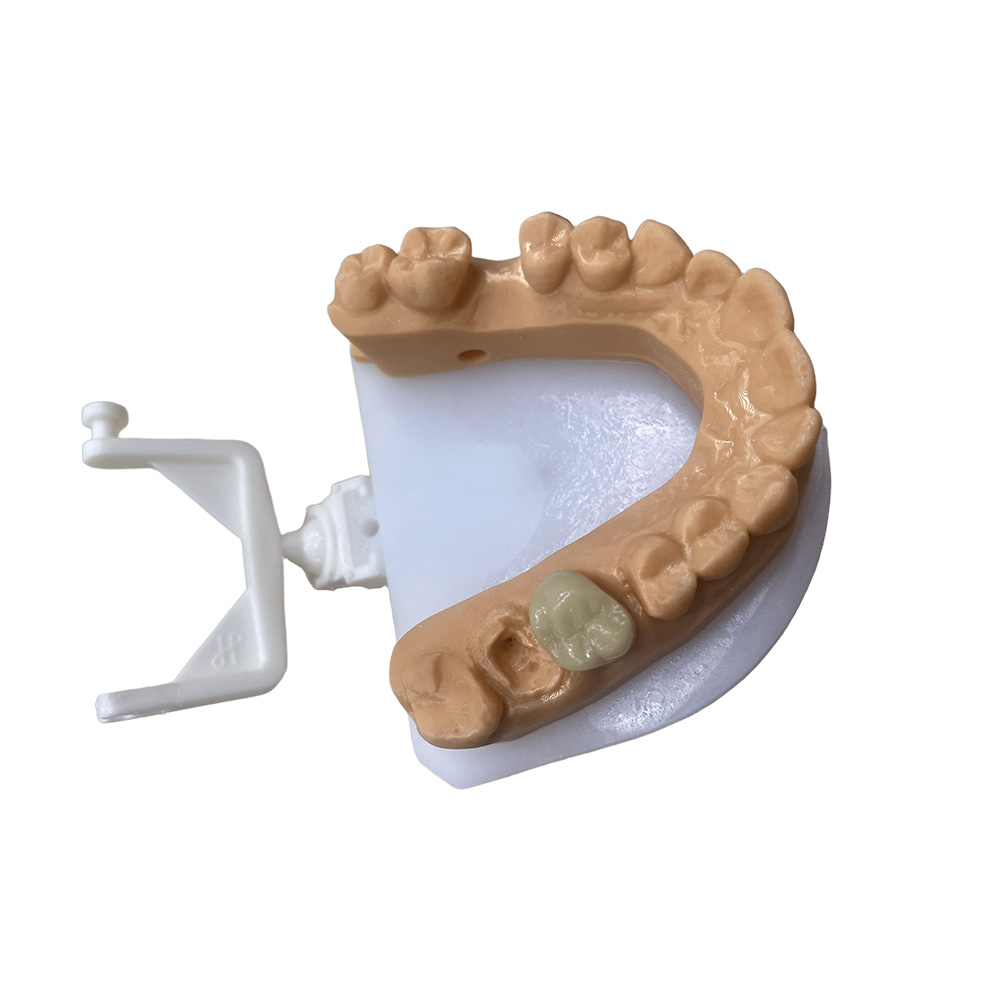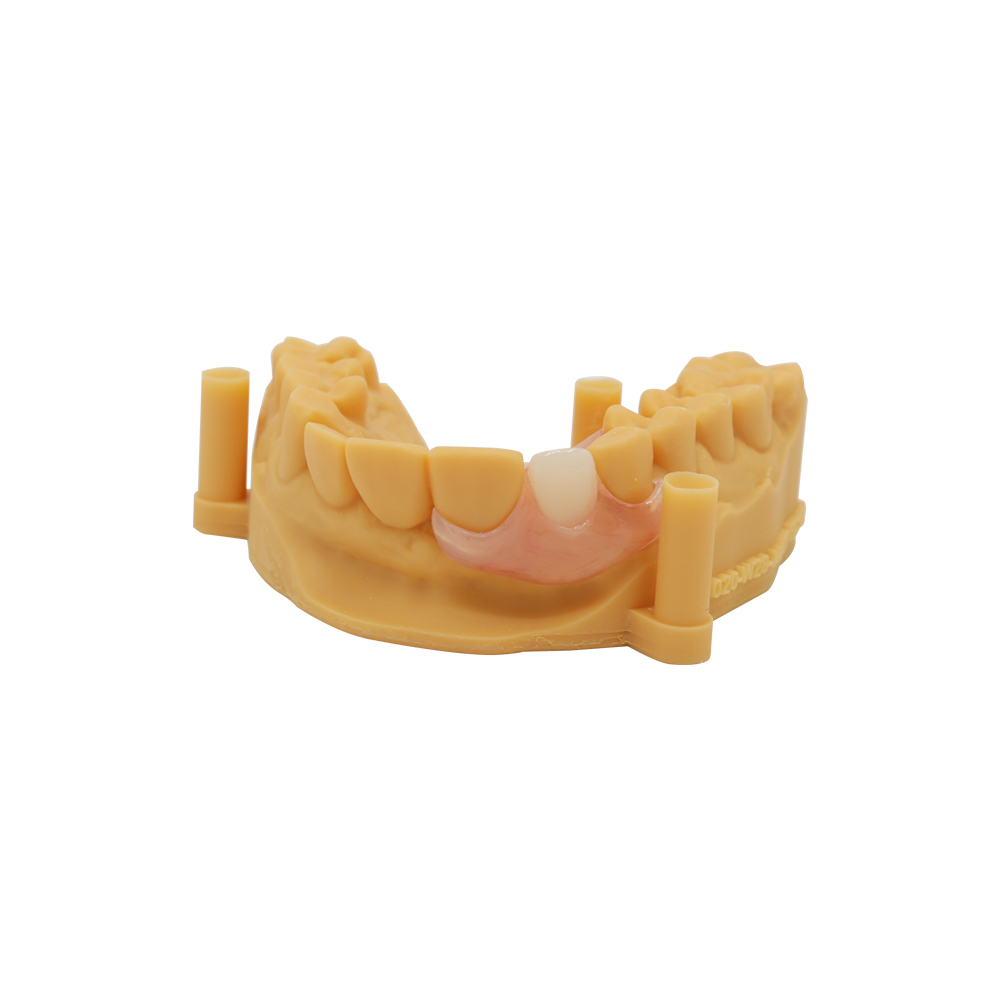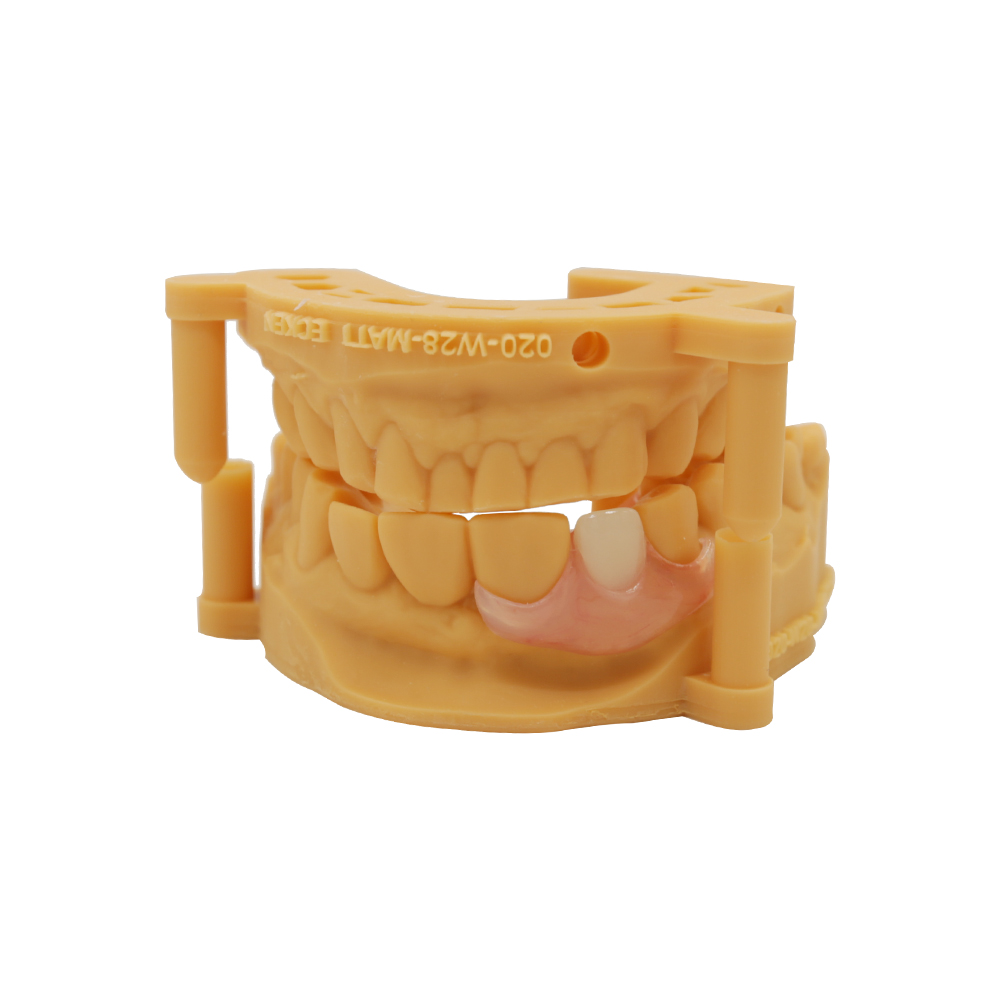
One Tooth Partial Denture, Removable Single Tooth Denture
Removable Single Tooth Partial Denture from Istar Dental Lab
Introduction to Removable Single Tooth Partial Dentures
At Istar Dental Lab, we know how important every tooth is for a patient’s health, ability to function, and appearance. When a single tooth is lost, the effect can be big, changing how a person chews, speaks, and feels about themselves. Removable single tooth partial dentures are an important replacement option made to fix this specific problem. A removable single tooth partial denture is a device carefully made to replace one missing tooth. Unlike fixed partial dentures (bridges) or dentures that replace many teeth, removable single tooth partial dentures are specially designed to replace just one tooth. They are held in place by the neighboring teeth and/or the gums around them, and are made to be easily put in and taken out by the patient.
The main goal of removable single tooth partial dentures has many parts. Mostly, they are used to bring back a good look, clear speech, and chewing ability when one tooth is lost. This is especially important when permanent options like dental implants or fixed bridges are not a good idea because of the shape of the patient’s mouth, their overall health, or money concerns. Besides being a final solution, removable single tooth partial dentures are also very useful as temporary replacements. They can be used while the gums heal after a tooth is pulled, while waiting for dental implants to bond with the bone (osseointegration), or during orthodontic treatment to keep the space open and looking good.
Clinical Indications, Contraindications, and Patient Selection
The careful choice of removable single tooth partial dentures as a treatment is very important for getting good, reliable results. At Istar Dental Lab, we stress the need for a complete check-up and for thinking about each patient’s needs. This helps our dental partners make smart choices about treatment.
Clinical Indications for Removable Single-Tooth Partial Dentures
Removable single tooth partial dentures are a useful choice in certain situations when a single tooth is missing:
- When Fixed Options Aren’t Possible: They are mainly recommended when permanent options, such as single-unit fixed partial dentures (bridges) or dental implants, are not possible. This could be because of issues with the shape of the mouth or jaw (like not enough bone for implants or no strong enough abutment teeth for a bridge), overall health problems (like uncontrolled diabetes or other conditions preventing surgery), or money concerns.
- Saving Neighboring Teeth: Removable single tooth partial dentures are a great fit when the teeth next to the gap are healthy and untouched, and keeping their natural shape is the main goal. Unlike fixed bridges, removable single tooth partial dentures don’t require any drilling or filing down of the teeth next to the gap.
- Younger Patients: In younger patients where the face and jaw are still growing, and getting an implant is put off until the bones are fully grown, removable single tooth partial dentures are a great temporary fix to keep the space, look, and function.
- Temporary or Transitional Use: They are often used as temporary fixes while the gums heal after a tooth is pulled, while waiting for implant osseointegration, or during more involved treatment plans that include braces or major dental work.
- Patients with Health Issues: For patients with health problems that could make surgery more difficult (like a weak immune system, bisphosphonate therapy, or recent radiation to the head and neck), removable single tooth partial dentures offer a simpler option than implants.
Contraindications for removable single tooth partial dentures
While useful in many cases, removable single tooth partial dentures are not right for everyone. Certain health issues or patient habits may mean they shouldn’t be used:
- Poor Oral Hygiene and High Cavity Risk: Patients with poor teeth cleaning habits or who get cavities easily are not a good fit. Removable single tooth partial dentures can cause more plaque to build up and raise the risk of cavities on abutment teeth if not cleaned very carefully.
- Severe Periodontal Disease: Unhealthy gums around the teeth that would support the denture can lead to looseness and more problems.
- Uncontrolled Health Problems: Conditions that slow down healing or raise the risk of infection, like poorly controlled diabetes or a very weak immune system, may mean they shouldn’t be used because of the risk of damage to the gums and getting another infection.
- Grinding or Clenching Habits: Patients with habits like bruxism or clenching may cause the removable single tooth partial denture to wear down faster, break, or become loose.
- Not Enough Space: Enough room up and down between the top and bottom teeth (usually more than 6 mm) is needed for the denture base and the new tooth. Not enough space can result in a thick device or make it weaker.
- Patient Cooperation and Expectations: Patients who have trouble using their hands, who won’t follow cleaning instructions, or who expect it to look or work perfectly like a real tooth are usually not a good fit.
Material Excellence and Fabrication Options
At Istar Dental Lab, we are experts in all parts of making removable single tooth partial dentures. We use many different materials and follow strict design rules to get the best results for patients. Removable single tooth partial dentures are generally grouped by what they’re made of, their shape, and how they stay in place.
Classifications and Designs
Removable single tooth partial dentures can be grouped by the materials used to make them, including acrylic, metal, and thermoplastic flexible polymers. Different designs include traditional acrylic ones, cast metal frames, and special one-sided designs.
One well-known one-sided design is the “Nesbit” partial denture. This design usually replaces a single back tooth and is often made from flexible thermoplastic resins or acrylics. The Nesbit design is known for being on just one side, often shaped like a horseshoe, and it uses the gums and natural tooth curves to hold it in place. However, it’s important to know that because they are small and have no support from the other side of the mouth, they have been linked to a risk of accidentally swallowing or breathing it in, which has led to warnings from health authorities in some places.
| Material / Product Type | Key Features & Description | Best Clinical Application |
|---|---|---|
| Flexible Partial Denture | A big step forward in removable single tooth partial denture materials has been the new use of thermoplastic polymers, such as nylon-based polyamide resins. These materials are very flexible, safe for the body, and hard to break. They are made using an injection process, which allows for thin, flexible designs that hold on very well by gripping the gums and natural tooth curves without needing metal clasps. This gives a better look and more comfort for many patients. While very flexible and nice-looking, these materials can be hard to change or polish, and may pick up stains or smells over a long time. New improvements in these materials focus on better color and soaking up less water. | Aesthetic Zone: Ideal for a flipper for front tooth or to solve a gap in front teeth solution. Perfect for patients with metal allergies or those who prioritize comfort. |
| Acrylic Partial Denture | These devices mainly use polymethyl methacrylate (PMMA) for the base. PMMA is a hard, good value material that is fairly easy to fix or change. To hold them in place, these dentures often include wire or cast metal clasps. While PMMA is widely used, acrylic removable single tooth partial dentures can be thicker than flexible ones, don’t fit as closely to the gums, and may have clasps that are easier to see. PMMA can be processed using traditional heat or cold methods, but newer digital design and milling techniques are being used more and more for a better fit. | Transitional/Temporary: Excellent as an immediate partial denture. A go-to temporary flipper before implant placement. The most common partial denture for one missing tooth for short-term use. |
| Cast Metal Partial Denture | For replacing one tooth, cast metal frameworks, usually made from cobalt-chromium alloys, offer better stiffness, support, and last longer. They are less common for single-tooth replacement because they cost more and require more tooth preparation than other options, but they provide great strength without being bulky. Metal frames are usually made with the lost-wax casting method, but newer techniques like selective laser melting (SLM) and CAD/CAM milling are used more often now for very exact and repeatable frames. | Long-Term Use: The best choice for a definitive, long-lasting removable appliance. Its strength makes it ideal for replacing posterior teeth and ensuring high chewing efficiency with partial denture. |
| Nesbit Partial Denture | This design usually replaces a single back tooth and is often made from flexible thermoplastic resins or acrylics. The Nesbit design is known for being on just one side, often shaped like a horseshoe, and it uses the gums and natural tooth curves to hold it in place. However, it’s important to know that because they are small and have no support from the other side of the mouth, they have been linked to a risk of accidentally swallowing or breathing it in, which has led to warnings from health authorities in some places. | Single-Side Replacement: Specifically for cases where a unilateral appliance is preferred, often compared in a nesbit vs flipper discussion. |
Manufacturing Processes and Innovations
Our laboratory uses modern production methods to make removable single tooth partial dentures of very high quality:
- Injection Molding: For thermoplastic flexible removable single tooth partial dentures, this process needs special machines and exact temperature control to make sure the material flows into the mold the right way, creating a thin, accurate, and strong device.
- Conventional and Digital Workflows for Acrylics: Acrylic removable single tooth partial dentures are made using old-school flasking and packing methods, or more and more, with modern digital CAD/CAM systems. Digital design gives exact control over the denture’s shape, and milling or 3D printing of PMMA gives a better fit and takes less time to make.
- Advanced Metal Fabrication: Metal frameworks are made using lost-wax casting for strong, traditional designs, or with the latest selective laser melting (SLM) and CAD/CAM milling for very exact and detailed shapes.
Engineering Precision: From Clasp to Pontic
How well every removable single tooth partial denture works depends on its design. Our team of dental lab technicians carefully designs each part for the best fit, hold, and stability.
- The Pontic: The artificial tooth itself, expertly matched to the patient’s other teeth for a natural look.
- The Saddle: The gum-colored base that sits on the gum tissue and holds the pontic.
- The Framework: Made of a major connector and minor connector in the partial denture design, this structure holds all the parts together.
- The Clasp Assembly: The key part that holds the denture in. We make all types of denture clasps:
- Removable partial denture clasps are designed to grip the natural curves of the abutment teeth.
- Akers Clasp (Circumferential Clasp): A classic clasp that wraps around the tooth from above the widest part.
- Bar Clasp: A clasp that comes up from the gumline to grip the tooth, often chosen for a better look.
- RPI Clasp System: A smart design (Rest, Proximal plate, I-bar) that puts less stress on the abutment tooth.
- Combination Clasp: Uses a flexible wire arm to hold on and a solid cast arm for support.
- The Occlusal Rest: A key part that sits in a small spot prepared on the chewing surface of the abutment tooth. It provides support from top to bottom and stops the denture from pressing into the gums. For more complex cases, we can also use precision attachments for partials instead of regular clasps.
Our partial denture making process starts with your high-quality dental impression. For practices trying out teledentistry, we can even give advice on how to work with an at-home dental impression kit.
Partner with the Experts in Single Tooth Replacement
From the best material for partial dentures, like trouble-free Valplast denture resins, to the detailed design of a removable bridge for one tooth, our lab is your committed partner.
Let us handle the making of the denture, so you can focus on your patients. Improve the services you offer with a dependable, good-looking, and functional removable single tooth partial denture from a lab that knows what you need.
Contact us today to receive your starter kit and learn more about our services.

